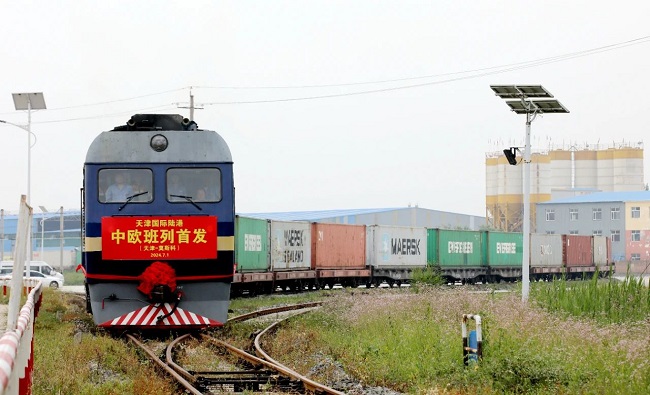
Tianjin International Land Port launches China-Europe freight train
A freight train loaded with automotive parts and mechanical equipment departed from Tianjin International Land Port in Tianjin's Xiqing district on July 1, heading to Moscow, the capital of Russia. This marks the first time that Tianjin International Land Port launches China-Europe freight train.
Carrying 110 standard containers, the train transported 1,129 tons of goods worth 15.06 million yuan ($2.07 million). It is expected to complete the 7,800 km trip to Moscow in about 15 days.
Tianjin International Land Port, in the town of Zhangjiawo in Tianjin's Xiqing district, is a key hub of the Beijing-Tianjin-Hebei Land Port Cluster. It aims to create an open economic new platform that connects domestic and international dual transport, as well as a new international land freight channel.
"The opening of the China-Europe freight train at Tianjin International Land Port provides a new logistics platform for import and export trade in the Beijing-Tianjin-Hebei region," said Guo Chunning, general manager of the port.
Guo highlighted that the opening of the train service achieves mutual promotion and complementarity between land and sea; it not only adds new impetus to the development of the regional foreign trade industry and export-oriented economy, but also provides new logistics services for import and export enterprises in the Beijing-Tianjin-Hebei region to enter the international market.
Compared with sea freight to Moscow, the China-Europe freight train's direct land transportation saved about 30 days in transportation time.
Tianjin International Land Port intends to further strengthen the construction of multimodal transport facilities and the supporting service system, expand and open international routes from Tianjin to Central Asia, Central and Eastern Europe, Western Europe and ASEAN, and thus better serve the construction of the Belt and Road Initiative.





